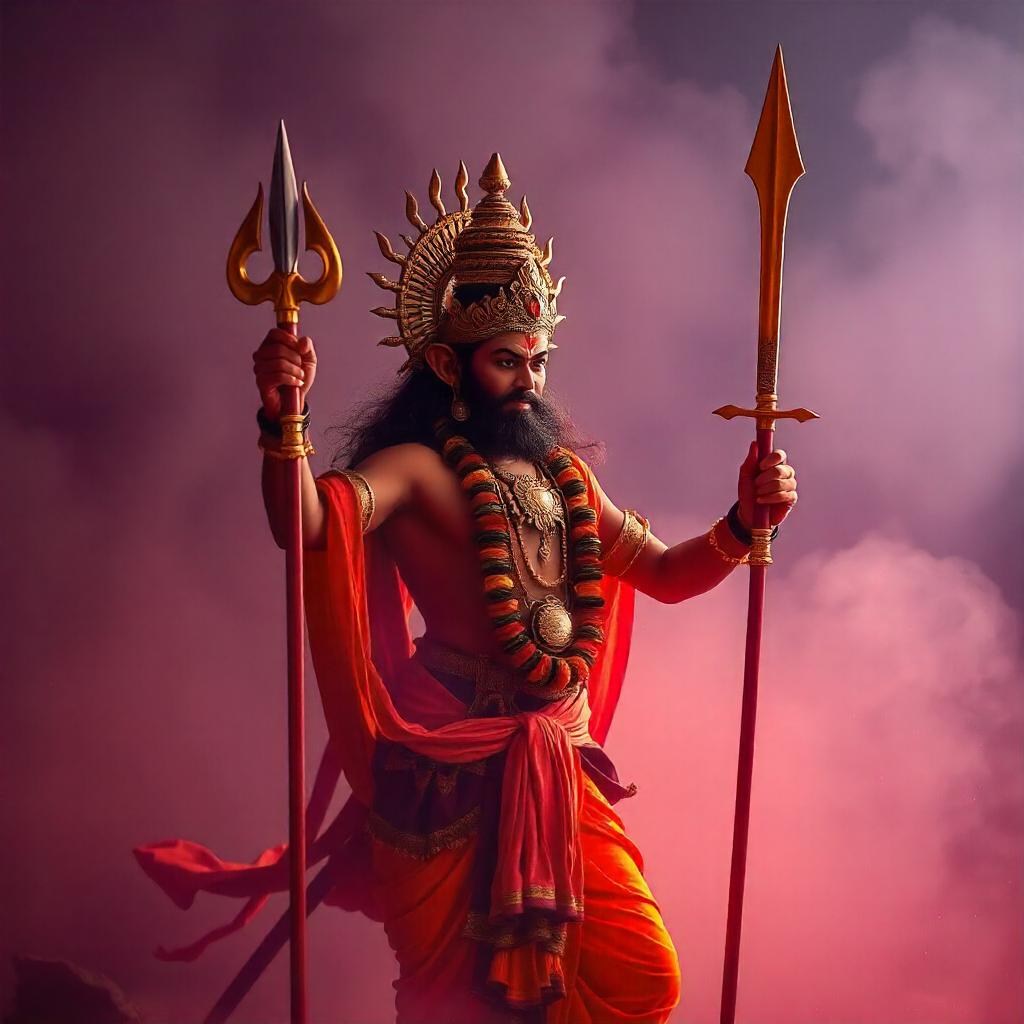The Mahabharata, one of the greatest epics of ancient India, is not just a tale of kings and warriors but also of divine weapons that played pivotal roles in its epic battles. These weapons were more than just tools of war; they symbolized divine power and carried immense significance. In this blog post, we’ll explore the top weapons used in the Mahabharata, their significance, popular stories associated with them, and how they compare to modern weaponry.
1. Brahmastra
The Brahmastra stands out as one of the most formidable weapons in the Mahabharata, known for its catastrophic power. Created by the god Brahma, this weapon has the ability to cause immense destruction, akin to a modern-day nuclear weapon. The weapon’s significance is highlighted during the Kurukshetra War when Ashwatthama, in a moment of desperation, launches the Brahmastra to annihilate the Pandava lineage. The destructive potential of the Brahmastra nearly leads to complete devastation, showcasing its unparalleled power. In the modern context, this weapon serves as a powerful symbol of the need for responsible use of such overwhelming forces and the ethical considerations involved in wielding immense power.
2. Vijaya Dhanush
The Vijaya Dhanush, or “Bow of Victory,” is a divine weapon initially held by Lord Shiva and later bestowed upon Karna. This bow is renowned for ensuring victory in battle, making its wielder nearly invincible. Karna’s legendary use of the Vijaya Dhanush underscores its effectiveness, enabling him to secure numerous victories against formidable foes. When comparing it to modern weaponry, the Vijaya Dhanush can be seen as analogous to a highly advanced and reliable weapon system that guarantees success and superior performance. Today, the Vijaya Dhanush symbolizes the pursuit of excellence and the critical role of skill and precision in achieving success, resonating with the principles of strategic advantage in contemporary contexts.
3. Pasupata
The Pasupata, associated with Lord Shiva, is known for its overwhelming destructive power, capable of annihilating all forms of creation. This weapon’s immense impact is evident when Arjuna and Ashwatthama wield it during the Mahabharata. The Pasupata’s power can be likened to that of a modern weapon of total annihilation, such as a thermonuclear device. Its use in the epic demonstrates the extreme consequences of harnessing such immense power. The Pasupata’s modern relevance lies in the concept of ultimate destructive force and the ethical responsibility that comes with the development and deployment of such potent technologies.
4. Sudarshana Chakra
The Sudarshana Chakra is a divine spinning disc-like weapon associated with Lord Vishnu. Renowned for its precision and sharpness, the Chakra is used to cut through anything in its path. While not as central in the Mahabharata, its role in divine interventions highlights its effectiveness in both offense and defense. In modern terms, the Sudarshana Chakra can be compared to smart weapons or guided missiles, designed for accuracy and targeted strikes. Its significance today emphasizes the importance of precision and strategic defense, reflecting the advancements in modern weaponry and the need for effective defense systems.
5. Gandiva
The Gandiva is a legendary divine bow granted to Arjuna by the god Agni. This bow is celebrated for its extraordinary power, durability, and the ability to never tire or break. Arjuna’s prowess with the Gandiva underscores its unmatched strength and reliability in battle. In the realm of modern weaponry, the Gandiva resembles high-performance, durable equipment that maintains peak effectiveness over time. The Gandiva’s modern significance highlights the ideals of perseverance and the value of having dependable and effective tools in any endeavor, resonating with contemporary principles of reliability and performance.
6. Sharanga
Sharanga, another divine bow belonging to Lord Vishnu, is known for its divine power and strategic importance. Vishnu’s use of Sharanga in cosmic battles to defeat demons and restore balance underscores its critical role in the epic. When compared to advanced weapon systems, Sharanga’s power and versatility are akin to modern weaponry designed for decisive actions in critical situations. Today, Sharanga symbolizes the importance of possessing powerful and effective tools to maintain order and protect against significant threats, reflecting the strategic advantages in modern defense technologies.
7. Naga Astra
The Naga Astra is a fearsome weapon that unleashes a swarm of serpents upon the enemy. This weapon embodies fear and overwhelming force, as demonstrated by Ashwatthama during the Mahabharata’s battles. The Naga Astra’s impact can be compared to modern psychological warfare tactics, designed to create chaos and induce fear. Its modern relevance lies in understanding the role of psychological tactics in warfare and the influence of fear in conflict situations, reflecting the strategic use of psychological and unconventional methods in contemporary military strategies.
8. Varunastra
The Varunastra is a water-based weapon associated with the god Varuna, capable of controlling and unleashing water in battle. Arjuna’s use of the Varunastra to manipulate water highlights its strategic importance in combat. Although still largely theoretical, modern experimental weather manipulation technologies offer a parallel to the Varunastra’s capabilities. The Varunastra emphasizes the potential for controlling natural elements for strategic advantages, illustrating the evolving concepts of environmental and weather-related technologies in modern defense scenarios.
9. Agneyastra
The Agneyastra is a fire-based weapon linked to the god Agni, capable of unleashing destructive flames. This weapon’s firepower is comparable to incendiary weapons and modern fire-based military technologies, used to incinerate enemies and fortifications. The Agneyastra’s modern significance lies in the strategic application of fire in warfare and the necessity of managing such powerful forces responsibly. It underscores the balance between the destructive potential of fire-based technologies and the ethical considerations surrounding their use.
10. Aindra Astra
The Aindra Astra, associated with the god Indra, is known for its immense power and effectiveness in battle. Arjuna uses this weapon to defeat formidable enemies, demonstrating its significant impact. In modern contexts, the Aindra Astra’s power can be likened to high-yield explosive weapons with substantial destructive capabilities. The modern relevance of the Aindra Astra lies in its representation of the balance between effective tools for conflict and the ethical implications of their use, emphasizing the need for responsible deployment of powerful technologies.
Conclusion
Exploring these top weapons in the Mahabharata provides valuable insights into ancient understanding of power and technology. Each weapon not only played a crucial role in the epic’s narrative but also carries lessons about the balance between strength and responsibility. These divine arms serve as metaphors for modern concepts of power, precision, and ethical considerations in the development and use of advanced technologies.

